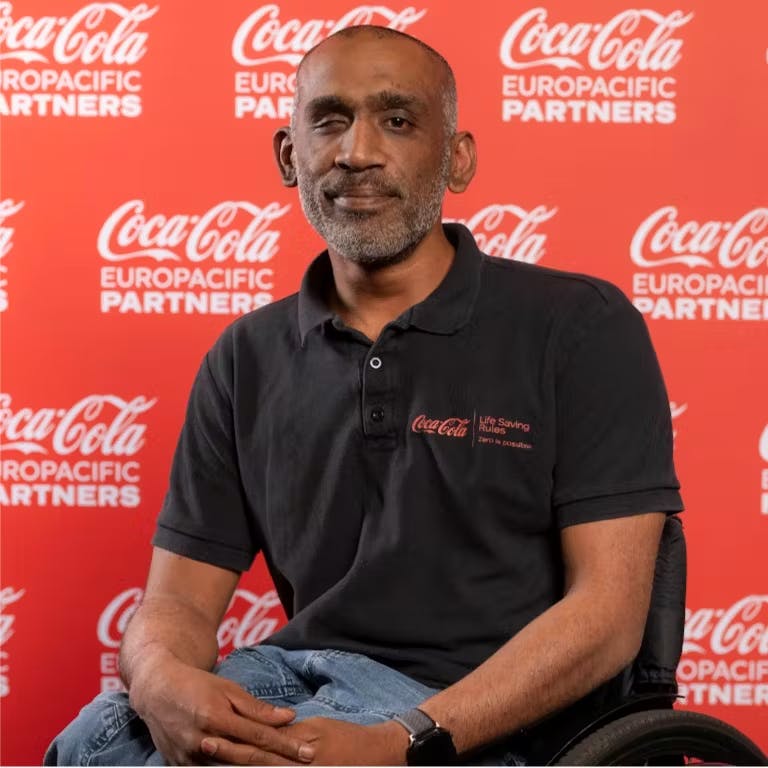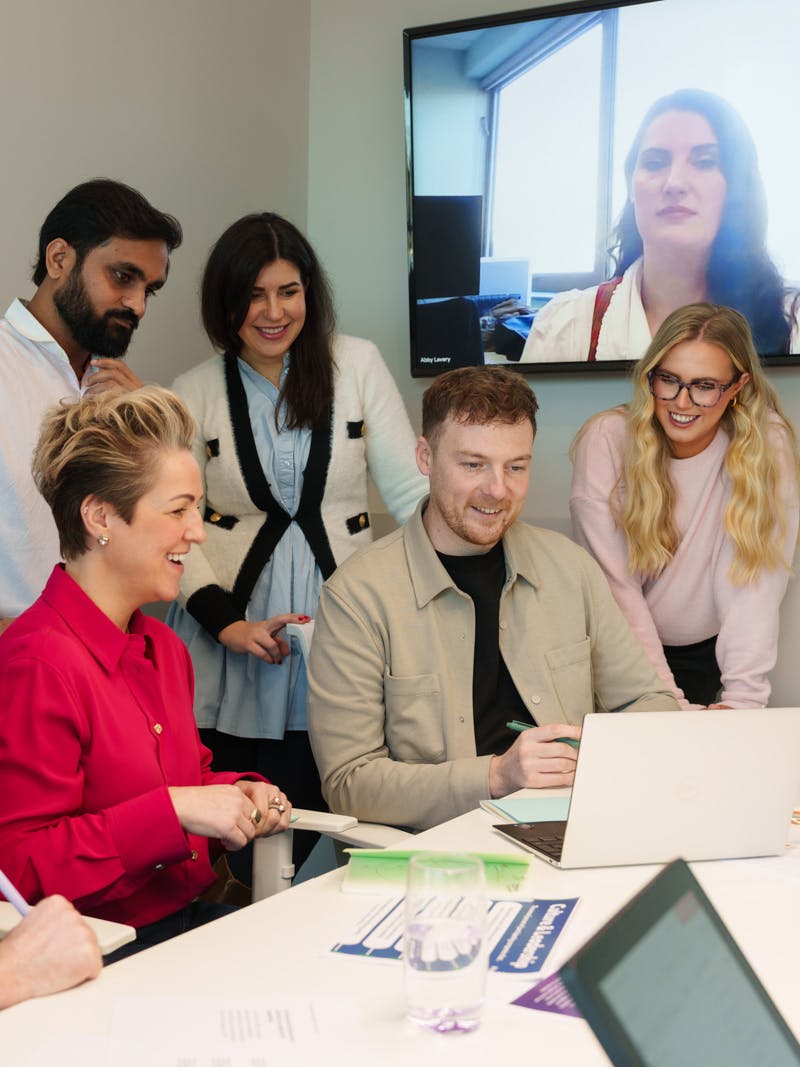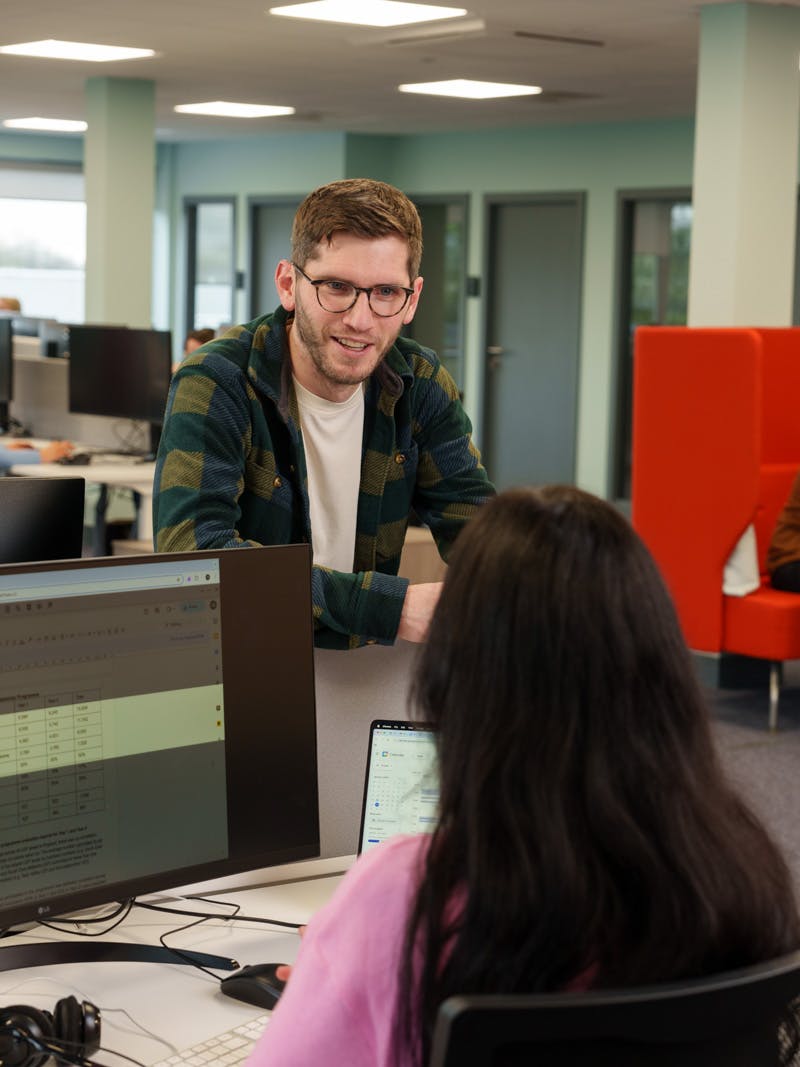Welcome to your neuroinclusion toolkit
Don’t forget to bookmark this guide.
Book a chat with our neuroinclusion specialists.
Enhance your knowledge with actionable strategies proven to make an impact for neuroinclusion.
In today’s evolving workforce, neurodiversity is a growing conversation. This toolkit sheds light on the importance of embracing neurodiversity and its positive impact on businesses.
By implementing the practical guidance and insights offered within this resource, you can create a work environment that fosters belonging, understanding, and maximises the potential of all your employees.

What you’ll find in this toolkit
The benefits of neurodiversity in the workplace:
Learn about the competitive advantages of a neurodiverse workforce, including unique skills, abilities and return on investment.
Creating a neurodiversity program:
Discover practical strategies, tips and examples from leading organisations and changemakers for fostering a successful neuroinclusion strategy in your business that values and empowers diverse employees.
Understanding and supporting neurodiversity:
Gain insights and personal perspectives into different neurotypes, such as ADHD, autism, dyslexia, and dyspraxia and how to support them.
Building inclusive recruitment practices:
Explore methods for attracting, recruiting and retaining top neurodivergent talent.
1 in 5 people are neurodivergent. This includes those with ADHD, autism, dyslexia, dyspraxia and more. These individuals’ brains work in different ways, often bringing a unique set of skills and talents that can be valuable in the workplace when supported and nourished.
Consider your workforce today: how many people could this be in your own teams?

There are more people in your workforce with dyslexia than those with blue eyes”
Martin McKay,
Founder & Executive Chairman of Everway
Martin was diagnosed with dyslexia at age 52. He is just one example of a late diagnosis in the workplace, but also a testament to the incredible innovation and strengths that come with neurodivergent thinking.
Why are neurodiversity diagnoses on the rise?
Globally, the prevalence of neurodiversity diagnoses has been steadily rising, particularly for autism, ADHD, and dyslexia. In the UK, autism diagnoses have surged by 787% over the past 20 years, largely due to improved awareness and diagnostic tools.
Similarly, in the US, about 1 in 36 children are diagnosed with autism, up from 1 in 150 in 2000. This increase reflects better recognition of neurodiverse traits, not necessarily a surge in cases, prompting workplaces to adapt to the growing neurodivergent workforce.
Gen Z and the new era of work
In today’s multigenerational workforce, Gen Z and millennials currently make up approximately 38% of the global workforce, a figure predicted to rise to about 58% by 2030.
As this generation enters the workforce, they’re setting new expectations for work environments that accommodate diverse cognitive styles and promote flexibility. This evolving workplace culture not only cultivates a more supportive atmosphere, it also leverages the unique strengths of neurodivergent individuals, enhancing creativity and collaboration.

Workplace expectations are changing. Why does this matter?
Candidates want to work for a company that is actively creating fair and supportive work environments for everyone.
Organisations are recognising that a strong sense of belonging at work is crucial for employees to perform at their best.
Neuroinclusion is becoming increasingly valued by employees within their workplace.
Business leaders are realising that neuroinclusive companies thrive on innovation and team collaboration, giving them a competitive edge.
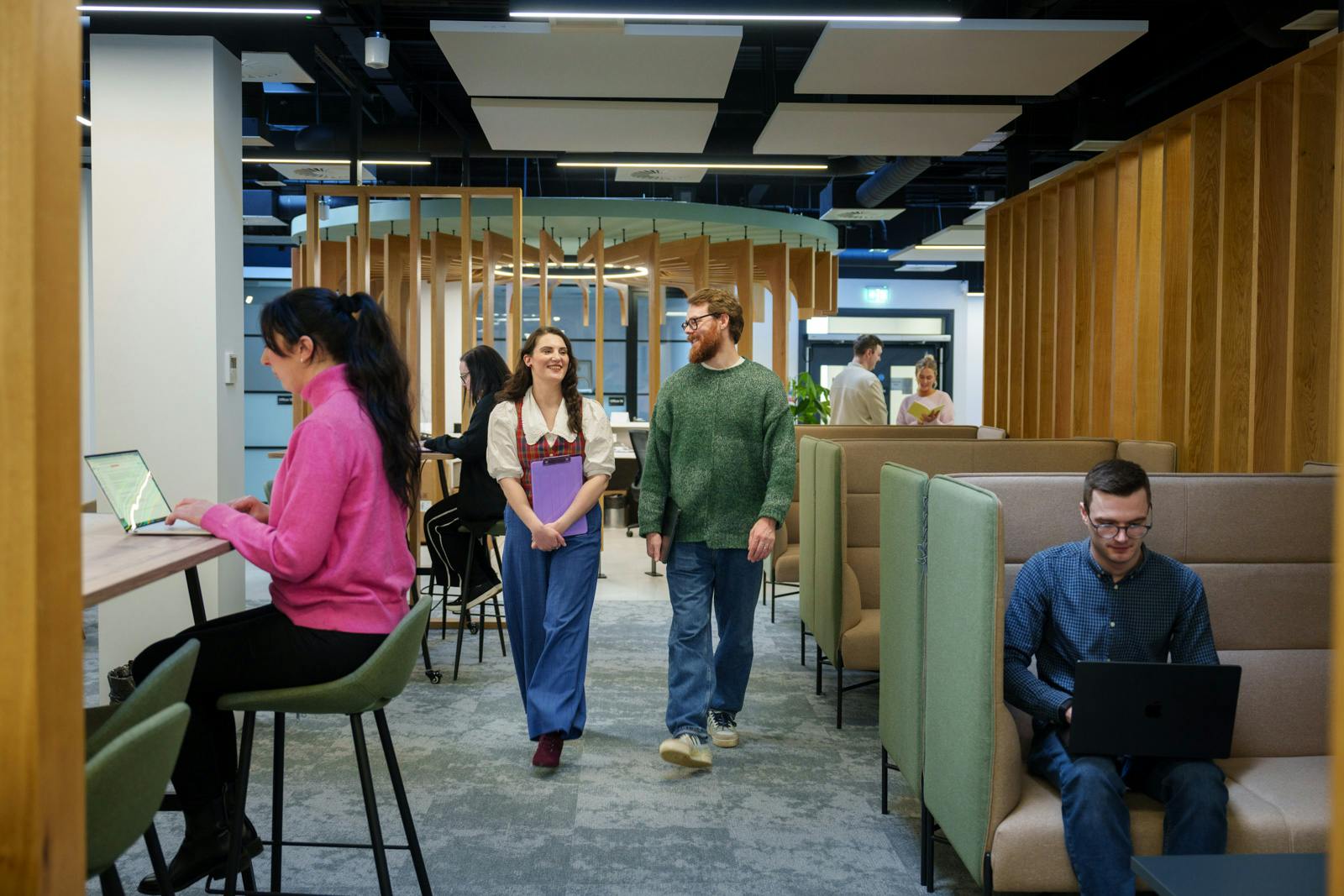
A neuroinclusive culture is valued by everyone
Workplace expectations are evolving and how organisations approach neuroinclusion is becoming increasingly important in attracting new talent. It’s not only those affected by neurodiversity who care about neuroinclusion.
Everway surveyed 500 neurodivergent employees and 500 neurotypical workers. Some 93% of neurodivergent employees said they’d be more likely to apply or continue to work for a company that supports neurodivergent employees well. And 63% of neurotypicals said the same.
What do employees want?
According to our research…
Tech solutions: 31% of neurodivergent workers said they’d benefit from specialist software
Neuroinclusion training: 24% suggested neurodiversity awareness training for colleagues
Employee communities: 17% felt they’d benefit from a dedicated support network
Alternative spaces: 16% said dedicated quiet spaces would be helpful
As the workforce evolves, so must our approach to accommodations
From accommodations
To neuroinclusion
Self-disclosure required
Universal access to support
Focus on “fixing” differences
Celebrate differences and providing choice
Reactive and individualistic
Proactive and systemic
Stigma and judgment
Psychological safety and belonging
Isolation and separation
Connection and collaboration
A truly fair and supportive workplace goes beyond accommodations to create an environment where everyone can thrive. This shift requires a move from reactive, individualistic approaches to proactive, systemic solutions that address the diverse needs of all employees.

Proactive neuroinclusion isn’t just about meeting legal requirements; it’s about creating a culture where every employee feels valued, supported and able to contribute fully.
By prioritising this approach, organisations reduce the need for self-disclosure and minimise stigma, creating psychological safety and a sense of belonging for everyone.
You can transform your workplace into a space that celebrates differences, empowers choice, fosters collaboration, and builds stronger, more resilient teams.
Neuroinclusion as a strategic advantage
How important is neurodiversity to your organisation?
It’s essential for business and people leaders to recognise and address the unique needs and contributions of neurodivergent individuals.
Neurodivergent employees report remarkable abilities and work strengths, which are acknowledged by employers. Their unique perspectives and strengths can significantly enhance the success of projects and tasks. These individuals may require some adjustments to their work environment to meet their specific needs.
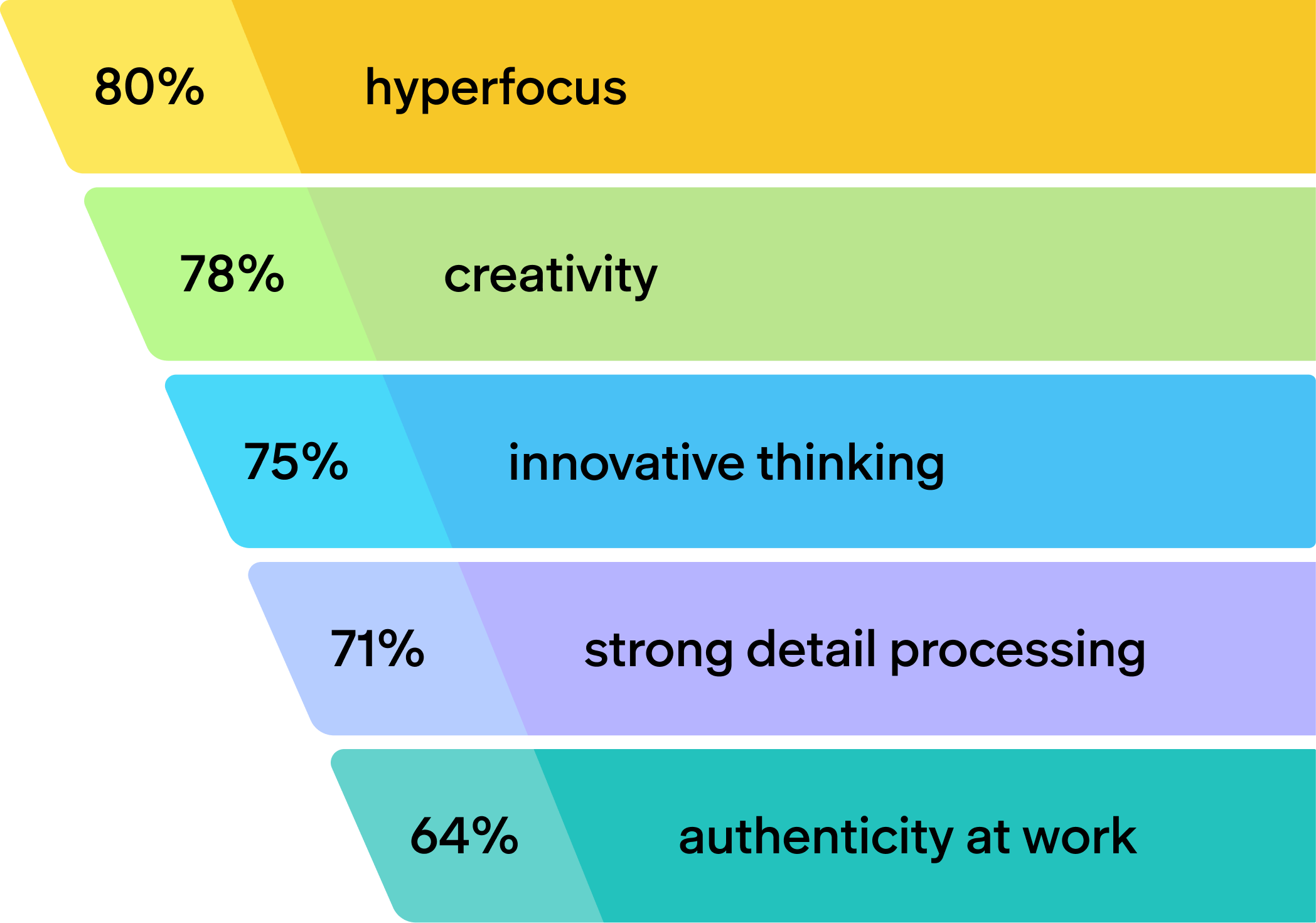

Embracing neurodiversity is a smart investment in human potential that drives creativity, productivity, and a more resilient organisational culture.
A standalone neurodiversity strategy is beneficial
Neurodiversity is often included under broader strategies in creating fair and supportive work environments. However, there is growing recognition of the need for a specific neuroinclusion strategy.
By prioritising neurodiversity as a standalone focus, companies can attract unique talent. Not only this, they’re more likely to create the type of environment that will retain neurodivergent talent, and unlock the benefits neurodiverse teams can bring.
Incorporating a dedicated neurodiversity strategy within your organisation ensures that neurodivergent employees receive the tailored support they need, while also aligning your business with the strategic advantages neurodiversity brings.
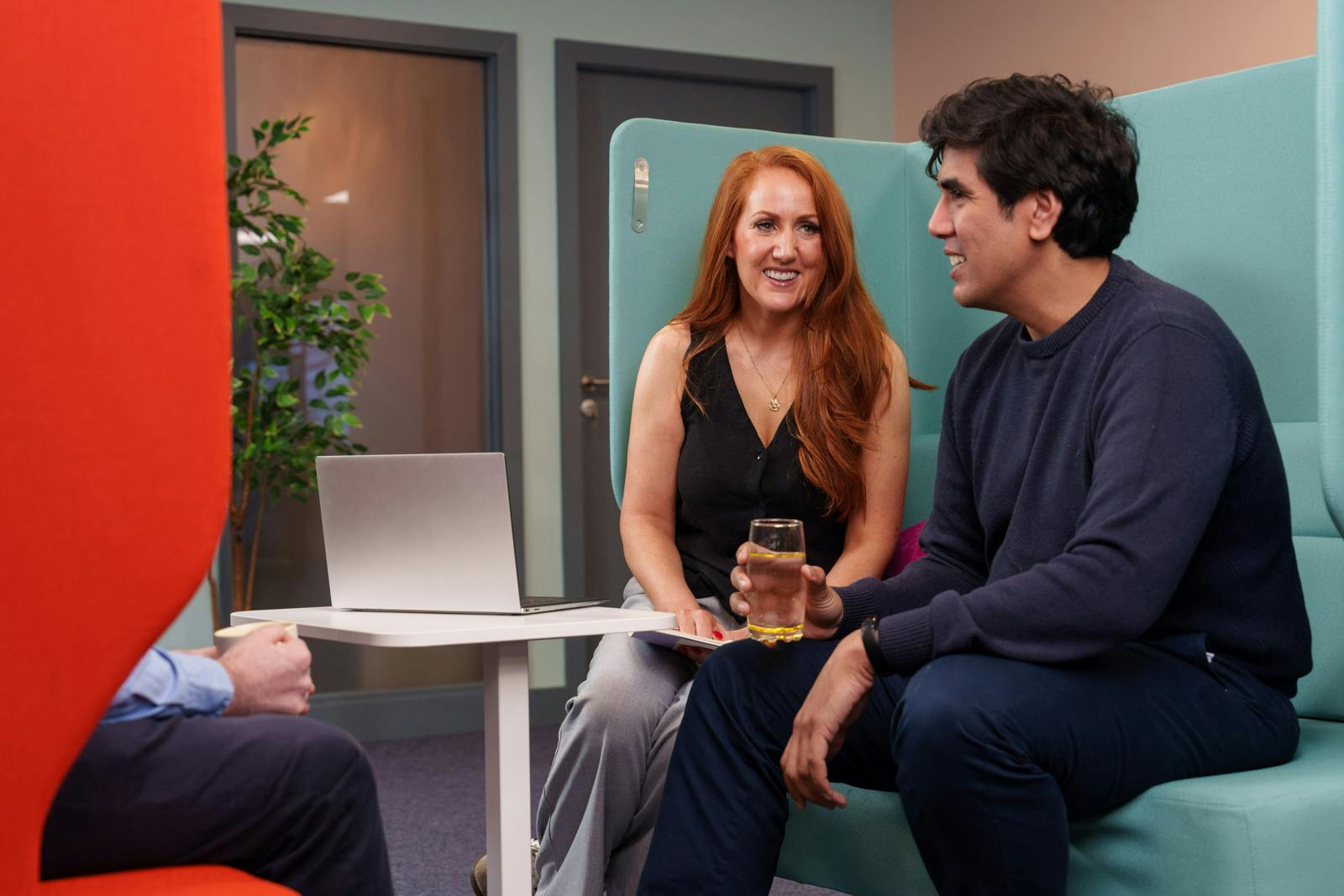
ADHD
Hyperfocus, creativity, energy and problem-solving abilities.
Autism
Detail-oriented, deep focus, reliability and logical thinking.
Dyslexia
Innovative thinking, big-picture thinking and verbal skills.
Dyspraxia
Creativity, strategic thinking and resilience.
Dyscalculia
Creative problem-solving, strategic thinking and verbal skills.
Companies who champion belonging for everyone outperform their competitors, with many reporting:

30% higher profit margins

28% higher revenue

2x the net income
Neuroinclusion benefits everyone
Neuroinclusive practices create more productive and flexible environments for everyone. They also align with broader values and expectations of the entire workforce.
In fact, companies who prioritise building a culture of belonging are more likely to attract talent with 67% considering it important when looking for employment opportunities. They also report advanced success:


2X more likely to meet or exceed financial targets

3X as likely to be high performing

6x more likely to be innovative and agile

8x more likely to achieve business outcomes
Research also shows that when employees feel a strong sense of belonging they are 5.3 times more likely to feel empowered to perform their best work. And 81% of employees also report being happy in their jobs – three times more than those who do not feel included.

Setting up your neurodiversity program
Industry leaders share their tips for success
EY’s Neurodiversity Centers of Excellence:
EY provides a successful model for integrating neurodivergent talent into the workforce, offering tailored support and achieving significant business benefits. Launched in 2015, EY supports over 850 neurodivergent employees with a retention rate of 92%. It has also led to a significant return on investment, such as one billion in revenue and a saving of over 3.5 million hours from solutions created by neurodivergent employees.
Key strategies include:
Intentional investment: EY is committed to supporting neurodivergent talent by expanding their Neurodiverse Centers of Excellence across 23 cities and 13 countries globally.
Tailored professional development: Neurodivergent employees work in environments that are accommodating and supportive, with tailored professional development.
High-level work opportunities: Neurodivergent employees at EY perform roles in AI, blockchain, data analytics and more.
Focus on gender parity: EY addressed gender imbalance by using more gender-inclusive language in recruiting and ensuring gender parity in subsequent hiring rounds.
Data-driven approach: EY uses data analytics to measure and monitor the success of their neurodiversity programs, treating them like any other business function.
Client demand for unique talent: Clients prefer neurodiverse teams, which EY can provide due to their robust neuroinclusion initiatives.
Wells Fargo’s neurodiversity program:
Launched in April 2020, Wells Fargo’s neurodiversity program includes a comprehensive approach to hiring, onboarding, education and support, ensuring sustainable success and productivity gains while fostering a fair and supportive work environment. The program has successfully hired 320 full-time employees into technology roles in the US and India and continues to expand. They have also achieved a 97% retention rate.
Key strategies include:
Sector specific: Created to support the neurodivergent community, the program has expanded to various departments like Technology, Finance and Corporate Risk, with plans to include more sectors.
Internal mobility and skills development: A new learning series called 'Developing My Career at Wells Fargo' and creating a skills development platform named 'Community Enrichment' aims to facilitate community engagement with the neurodivergent population.
Skills-based hiring: Wells Fargo is committed to skills-based evaluations over subjective skills, like eye contact at the interview stage to reduce bias and focus on candidates’ strengths.
Manager selection: Prioritising managers with high emotional intelligence and empathy, training them for neuroinclusive interviewing and support.
Interview support: Providing candidates with examples and experiences to help them navigate interviews comfortably. Use applicant-centric conversations to align candidates with suitable roles.
Buddy programs and job coaches: Offering buddy programs and job coaches to support new hires, helping them integrate socially and professionally within the organisation.
Comprehensive neurodiversity education: Investing in training for managers, HR and all employees to reduce bias and build cultural competency. Partnering with the Centre for Neurodiversity and Employment Innovation at the University of Connecticut to provide education and training.
Neurodiversity inclusion is not a philanthropic effort, but a strategic move to tap into a highly skilled, deeply diverse and critically underserved talent pool. It’s about creating a work environment that values unique perspectives and contributions and designing products or services with a wider range of users in mind. This not only increases the addressable market but also leads to higher revenues, profits and margins.
Stephen DeStefani, Wells Fargo

SAP’s Global Autism Program
Established in 2013, SAP’s Global Autism Program has become a leading example of integrating neurodivergent talent into the workforce. The program focuses on leveraging the unique strengths of autistic employees and boasts over 240 individuals across 16 countries. The program has achieved remarkable success, contributing over one billion in value. Beyond just hiring, SAP’s approach provides comprehensive support from onboarding through every stage of the career journey.
Key strategies include:
Focused initiative: SAP began with a specific focus on autism, recognising the high unemployment rates among individuals on the spectrum and addressing a significant gap in the workforce. This focus allowed for targeted strategies and tailored support.
Global expansion: The program has expanded to numerous countries, adapting its approach to local contexts while maintaining core principles of support.
Skills utilisation: Employees with autism are employed in roles that leverage their unique skills, such as analytical thinking, detail orientation and creativity. These roles span various departments, including technology and business operations.
Manager and employee training: SAP emphasises training for managers and employees to foster a neuroinclusive environment. This includes educating teams on how to effectively support and interact with neurodivergent colleagues.
Support structures: The program includes dedicated support structures such as mentoring and coaching to help neurodivergent employees integrate and thrive within the organisation.
Employee resource groups: SAP has established Employee Resource Groups (ERGs) that provide a platform for neurodivergent employees to connect, share experiences and support one another.
Best practices sharing: Through the SAP Autism Inclusion Pledge, SAP shares best practices and resources with other organisations, promoting wider adoption of effective neurodiversity practices.
The program started from recognizing that kids on the spectrum thrive with the right environment and technologies. Now in our 11th year, we’re seeing incredible results. We also launched the SAP Autism Inclusion Pledge to share our best practices and tips for free, helping organizations advance their own neuroinclusion efforts.
Sarah Loucks, SAP

Coca-Cola Europacific Partners Disability Program:
Coca-Cola Europacifc Partners (CCEP) is dedicated to creating a workplace where every employee feels valued and empowered. Their approach focuses on psychological safety, accessibility and talent development to support neurodiversity. By leveraging leadership support, enhancing accessibility, raising awareness and adapting talent practices, CCEP aims to seamlessly integrate neurodiversity into their global philosophy of inclusivity, embodied in their 'Everyone’s Welcome' mission.
Key strategies include:
Leadership engagement: Senior leadership plays a crucial role in championing neurodiversity. Their visible support and commitment help drive the initiative throughout the organisation.
Accessibility enhancements: The company focuses on making physical and digital environments more accessible. This includes collaborating with manufacturers on accessibility features for technology and promoting accessible meeting practices such as short durations and breaks and sensory tools.
Awareness building and storytelling: CCEP promotes awareness through employee stories and experiences shared in internal communications. This approach helps raise understanding and empathy among colleagues regarding different neurodiverse conditions and experiences.
Talent practices: The company adjusts its recruitment and interview processes to accommodate neurodivergent candidates. This includes offering adjustments such as pre-interview site visits, providing questions in advance and considering supported employment and internships.
Data-driven goals: CCEP aims to have 10% of its workforce represented by people with disabilities by 2030. Collecting self-declared data on disabilities and neurodiversity helps the company tailor support and address specific needs effectively.
Expert collaboration: Engaging with external experts and organisations, such as the Business Disability Forum and Disability Confident, helps CCEP stay informed and implement best practices in neurodiversity and accessibility.
Manager training: CCEP has implemented training programs, such as those provided by Thrive, to equip managers with the skills and knowledge needed to handle neurodiversity-related conversations and support effectively.
Accessibility is relevant to everyone, particularly digital accessibility, as so many of our everyday interactions use online systems. By rolling out neuroinclusive technology, like Read&Write, we are removing barriers that aren’t always visible, opening up opportunities and making the online experience easier for everyone. This is a fundamental part of our mission, to create a place where everyone feels welcome.
Julie Thomas, Coca-Cola Europacifc Partners (CCEP)

Inclusive technology in your neurodiversity strategy
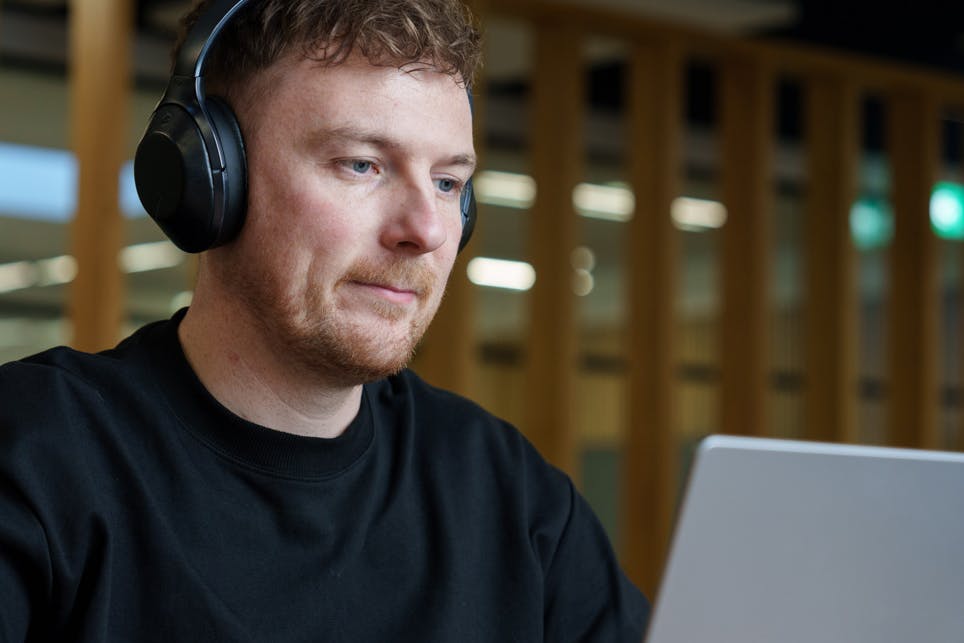
How can technology help you reach your neuroinclusion goals?
Incorporating neuroinclusive technology into your neurodiversity strategy isn’t just a best practice – it’s a game-changer. By integrating tools like Everway’s Read&Write for Work, organisations can make a significant impact for neurodivergent employees, and the wider workforce. This technology not only supports those who are neurodivergent, it also benefits all employees by removing invisible barriers.
Here’s how:
Supports unique strengths: Helps individuals work to their unique strengths, accommodating various cognitive and working styles.
Removes invisible barriers: Addresses and eliminates barriers that aren’t always visible but significantly impact employee performance.
Enhances accessibility: Provides tools that support employees with physical disabilities, neurodivergent profiles and multilingual backgrounds.
Boosts innovation and productivity: Encourages diverse ways of thinking and working, leading to increased creativity and efficiency.
Support your community: Our Read&Write Family Access offering also empowers organisations to make an impact beyond their business. They can give Read&Write to their employees' family members, extending support to their surrounding communities.
How leading organisations are using neuroinclusive technology
“Accessibility is not just a feature – it’s a fundamental aspect of our culture at Lumen. It’s about recognizing the diverse needs of our employees and customers and meeting them where they are. Our partnership with Everway serves as a reflection of our commitment to creating a world where everyone can succeed.”
India Sylvester, Lumen

“Accessibility is not just a feature – it’s a fundamental aspect of our culture at Lumen. It’s about recognizing the diverse needs of our employees and customers and meeting them where they are. Our partnership with Everway serves as a reflection of our commitment to creating a world where everyone can succeed.”
India Sylvester, Lumen

Top tips for success with neuroinclusive technology
The impact of neuroinclusive technology for neurodivergent employees
Read&Write has been universally designed with neurodivergent employees in mind to empower them to work to their full potential.
What do neurodivergent employees have to say about our tools?
Read&Write has been universally designed with neurodivergent employees in mind to empower them to work to their full potential.
Let’s talk about your neuroinclusion goals
For 30 years we have empowered organisations across the globe to create workspaces where every individual can thrive. Join leading companies and harness the power that neuroinclusive technology has to offer.
Let’s chat about your goals and discover how our tools can advance your neurodiversity strategy.








